When you pull a record from its sleeve, place it on your turntable, and lower the stylus, you’re witnessing a beautiful playback mechanism over 100 years in the making.
What began as an inherent human desire to preserve our mortal voices eventually unfolded through a series of incremental breakthroughs that gave birth to a cultural music revolution.
Your modern turntable is a feat of engineering prowess, but how much do you know about how it evolved into the centerpiece of your home Hi-Fi?
My name is Marc, and I’ve been running this website for vinyl record enthusiasts for over ten years. Join me as I showcase the history of record players and turntables.
It’s a story of scientific discovery, and of birth and renewal. Let’s call it ‘the story so far’.
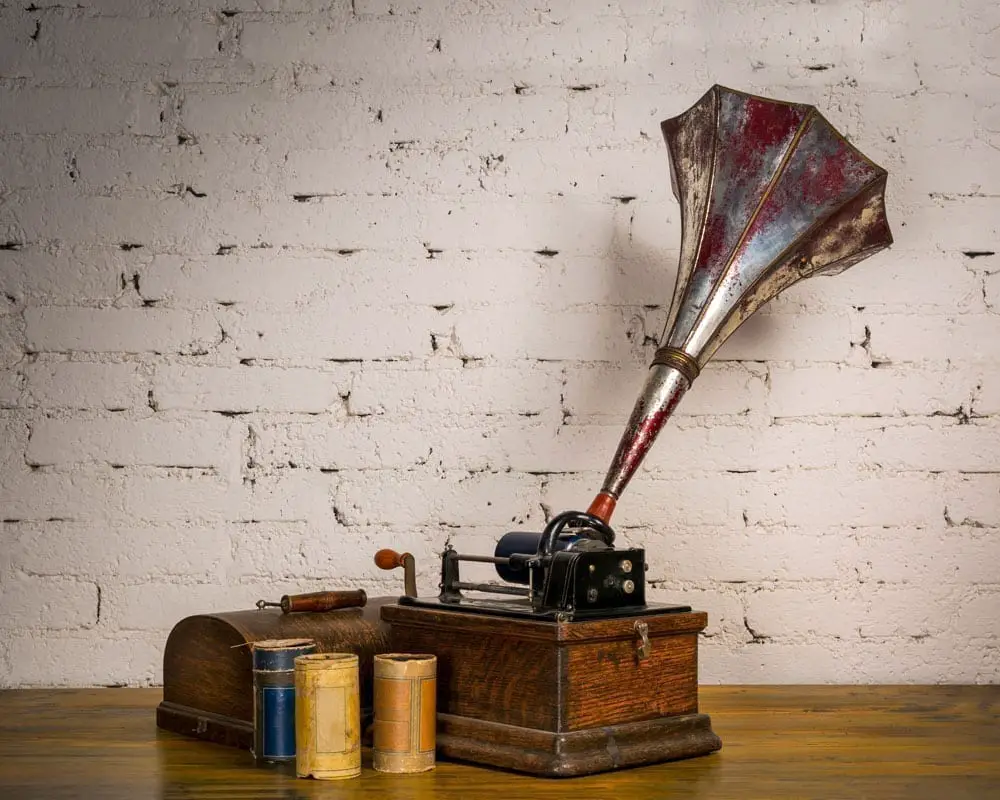
Who Invented The Record Player?
The roots of the beloved modern record player or turntable go right back to the origins of recorded sound.
It was a French inventor, Édouard-Léon Scott de Martinville, who first realized the process of recording sound back in 1857.
His ‘phonautograph’ system was inspired by anatomical drawings of the human ear. It used a horn to collect sound, which was then passed through an elastic membrane attached to a stylus.
This rudimentary device would record sound waves by etching them onto sheets of paper. However, it could only visualize sound waves and could not play them back.
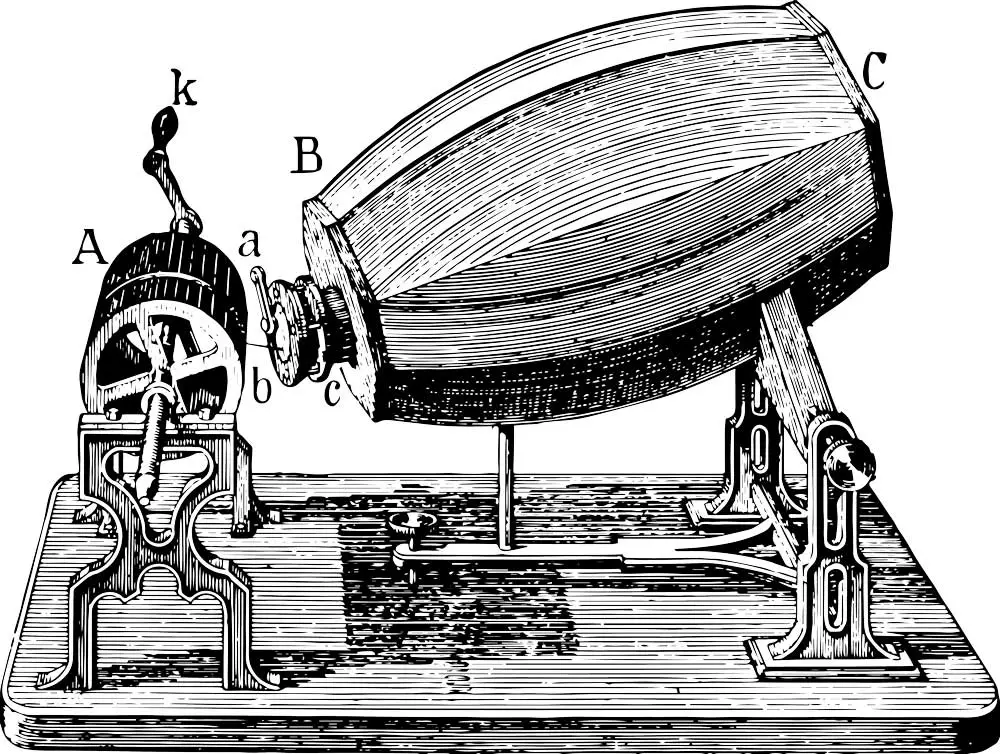
The honor of inventing a process that could both record and playback sound went almost simultaneously to two men, the French inventor and poet, Charles Cros and the American inventor, Thomas Edison.
Charles Cros proposed a means of reproducing sounds from Scott de Martinville’s phonautograms that was actually quite far-sighted and would involve converting phonautograms into a traceable groove on a metal disc.
He sent his written concept to the French Academy of Sciences in April 1877 –– just weeks before Edison concluded he could build a machine that would record and playback sound; enter the forefather of the turntable, Thomas Edison’s phonograph.
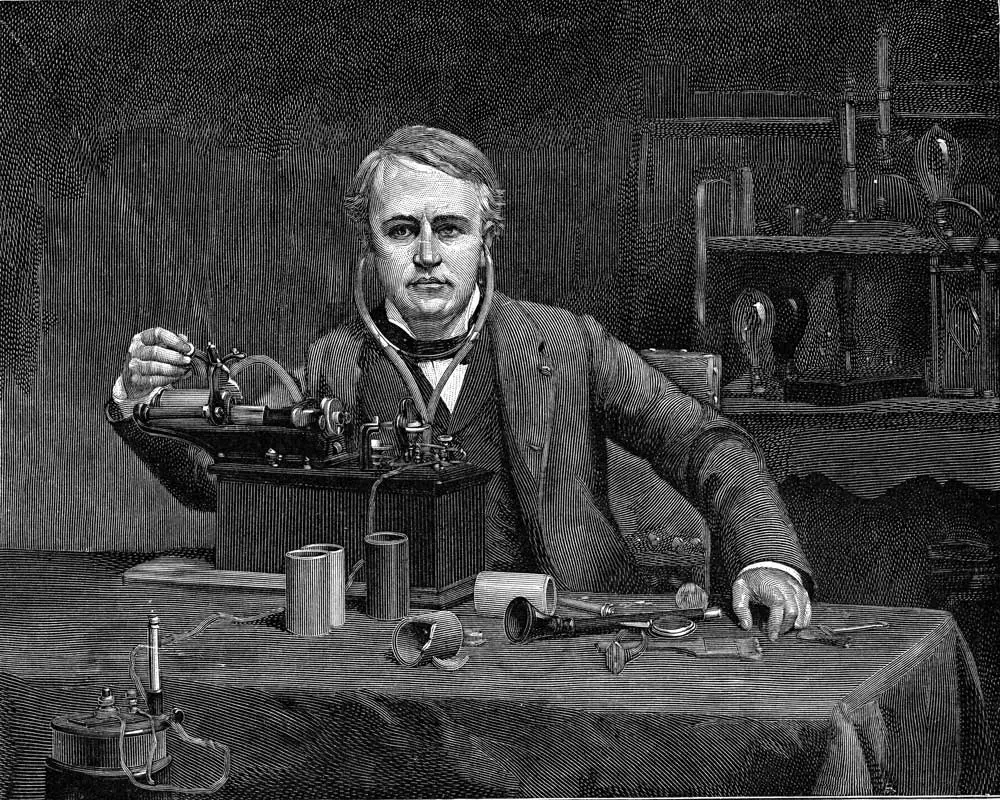
Edison’s invention of the phonograph in 1877 was a breakthrough in technology. The concept initially comprised of a cylinder wrapped in tin foil that could be turned by a hand crank.
When sound entered the mouthpiece, the diaphragm and attached needle would vibrate, making indentations in the foil.
Edison’s breakthrough came while attempting to record telephone calls by attaching a diaphragm and needle to the receiver.
Just like a phonautograph, the needle would make a mark on paper. As his idea unfolded, Edison swapped paper for the cylinder covered in tinfoil. When he reversed the process, he was delighted to hear the words he’d just record spoken back.
Check out this example clip I found below:
Both Cros and Edison had cracked the playback process of recorded sound, just weeks apart. The difference is, Edison had built a working model, and Cros had not.
The world went mad for Edison’s phonograph, and his prototype was quickly turned into a machine that well-off Americans could purchase for home entertainment. Therefore, it is Edison who takes most of the credit for early sound reproduction.
In France, though, Charles Crois is celebrated as the inventor of sound reproduction. Scott de Martinville and his invention of sound recording, on the other hand, were all but forgotten until his recordings were played back for the first time in 2008.
Check them out in the video I found below. Pretty neat, huh!?
Ingenious Competition
When Edison eventually turned his attention toward inventing the incandescent light bulb, others moved forward to improve the phonograph.
One such inventor was Alexander Graham Bell, whose Volta Laboratory made improvements on Edison’s invention. Principally he used wax in the place of tinfoil and a floating stylus instead of a rigid needle which would incise, rather than indent the cylinder.
Both improvements delivered superior sound quality and improved durability, and the machine was exhibited to the public as the graphophone. Bell’s team also pioneered clockwork playback and the use of electric motors to rotate the wax cylinders.
A race now began among rival systems. The American Graphophone Company was formed to promote the Volta Laboratory device and the later production of wax cylinder music records. Bell’s company did, at one point, approach Edison to discuss a possible collaboration, but Edison refused. He was determined to improve the phonograph himself and proceeded to adapt his invention to play solid wax cylinders.
Who Invented the Gramophone?
In the end, neither machine would win the day and go on to have major commercial success as the music playback device of choice. This accolade would instead go to the new gramophone, a machine patented by German-American inventor Emile Berliner in 1887.
The gramophone worked with a method closer to Charles Cros’ approach of etching recordings into a flat disc, rather than wax cylinders. It was Berliner’s decision to use flat rotation disks that would pave the way for the modern record as we know it today.
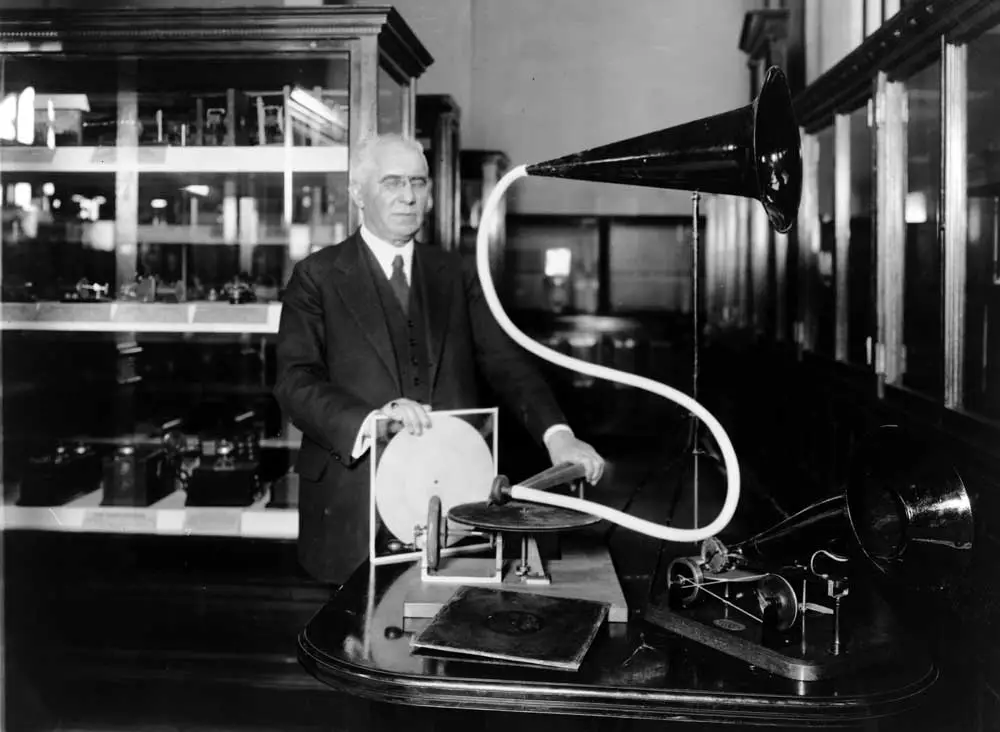
Very early designs of the gramophone played zinc disks coated in a thin layer of beeswax, but in the 1890s, Berliner collaborated with a German toy manufacturer to create five-inch rubber disks before introducing seven-inch rubber discs in 1894.
Eventually, Berliner’s American Gramophone Company perfected shellac disks, which went on to dominate the recorded music industry until the 1930s.
Scaling Up: The Beginnings of Record Pressing
What is significant about Berliner’s work is that he also pioneered the mass-production of recordings.
He was the first to record sound waves outwardly on a disk and create master copies using electroplating. With these methods, artists could reproduce recordings of a single track many times, seriously impacting the commercial value of the method for the better.
Before this, artists would have to perform a piece of music multiple times to produce more than one copy.
Cylinders did not disappear overnight, and the popularity of gramophones and phonographs began to soar. As they did, so too did the demand for manufactured ‘records’.
In this respect, flat discs had a distinct advantage: they can be easily reproduced by molding and stamping. Cylinders could not be reproduced until 1901–1902 when the gold molding process was introduced by Edison.
So in that sense, Berliner’s early ‘gramophone records’ were the first to be offered to the public. By late 1901, ten-inch records were marketed by the Victor Talking Machine Company who manufactured gramophones for Berliner.
Meanwhile, Columbia records had entered the market, producing their first disks under license. Columbia came up with several new methods, and by 1908 they had perfected the process of manufacturing double-sided shellac records.
There was no standard playback speed during this time, with early disk recordings ranging from 60 to 130 RPM.
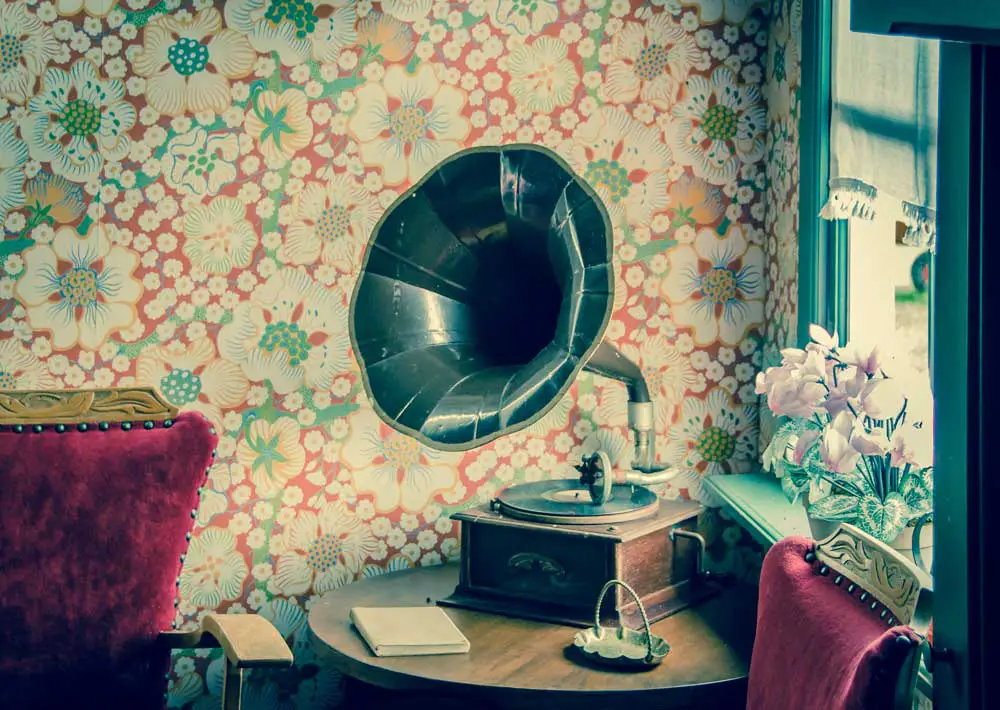
Competition with Radio and the Birth of Modern Records
The advent of radio in the early 1920s presented the record industry with new challenges. It provided significant competition to ‘records’ as music was now broadcast for free over the airways.
Secondly, the sound quality of radio was boosted significantly by the advent of electrical sound pickup. Few other than the middle class could afford a gramophone, and although standardizing the playback speed to 78RPM (around 1925) and adopting electrical rather than purely mechanical recording methods helped, the industry had a long way to go before mass-market adoption would take hold.
In the 1930s, vinyl (known as vinylite) was introduced as a record material for radio commercials. At that time, virtually no discs for home use were made using this material.
Interestingly, though, vinyl was used for the popular 78-rpm V-discs issued to US soldiers during World War II as the material significantly reduced breakage during transport.
Finally, after much research into developing a reliable and commercially viable playback system, the 12-inch Long Playing (LP) 33 1⁄3 rpm microgroove record album was introduced by the Columbia Record Company on June 18, 1948.
At the same time, Columbia introduced a vinyl 7-inch microgroove single at 33 1⁄3 rpm. This was short-lived because RCA Victor released the first vinyl 7-inch 45 RPM single in February 1949, which became the standard.
The upper and middle classes were still the predominant consumers of records for home use, and the industry was yet to take the mainstream. With the invention of modern vinyl records, and the war years now behind them, hardware manufacturers redoubled their efforts to produce an affordable solution.
Almost all record players now came with three speed settings: 33RPM, 45RPM, and 78RPM. It was the radio company, Philco that, in 1955, first introduced its range of all-transistor phonograph models.
They were portable, battery-powered, and even boasted a built-in amplifier and speaker. Even better, they cost as little as $59.95 in the US.
Check out an example video I found below to see it in action!
The availability of affordable record players undoubtedly aided the rise of pop music.
By the 1960s, affordability progressed further still by the introduction of cheaper portable record players and record changers that played stacks of records.
The affordability of 45RPM singles, combined with the accessibility of portable players, meant that teenagers had greater access to music than ever before. The music was different from that of their parents, and the stage was set for a youth music revolution.
The Modern Turntable
High-fidelity made great advances through the latter half of the sixties and seventies, with the rise in popularity of stereo records and separate turntables that were either direct or belt-driven.
The first stereo turntables were record changers capable of playing several records sequentially. Records were stacked on a spindle on top of each other, and when one finished, the player would automatically spin the next record.
However, the drive mechanism behind these systems (named the idler wheel) had its disadvantages. (The wheel was coupled to the motor, and therefore, vibration could impact the record’s sound).
As the modern single record turntable emerged, it didn’t require such a high-torque system as the record changer units. In this case, a belt-driven turntable was a much more efficient and cost-effective method.
The motor was off to the side, driving a rubber belt wrapped around the outside of the platter. This belt absorbed vibrations and significantly helped with isolating motor noise from the platter.
Direct Drive
It was Panasonic’s Technics brand that invented the direct-drive turntable in the early 1970s. The first model was their classic Technics SP-10 turntable. Now considered a classic vintage turntable.
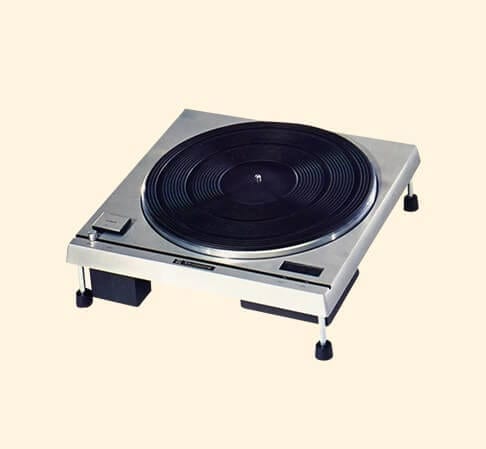
With a direct-drive turntable, the platter sits directly on top of a drive motor. This results in greater speed consistency and torque, while also reducing the amount of parts that can wear out.
However, critics would say it also introduces more noise interference that can work its way into the playback system. Either way, the direct-drive turntable was a significant breakthrough in turntable technology that remains in use to this day.
Learn more about the difference between direct drive and belt drive turntables, here.
Fall and Re-Birth
By the 1980s, most homes had a vinyl playing back system of some variety. Increasingly, these were ‘Hi-Fi’ systems made of separates (a turntable, radio, amplifier, and a cassette deck).
A century in the making, the record format had gone from a primitive and elite system made with a basic cylinder and tinfoil to a fully-fledgling Hi-Fi experience available to almost anyone.
Time, however, keeps rolling on, and as the decade progressed, the rise of digital technology and the compact disk resulted in a sharp decline for vinyl and turntable sales.
Many enthusiasts never let go, of course, and in many respects, DJ turntablism helped keep the format alive through the dark days of the 90s and early 00s.
Today, the sales of vinyl records and turntables are higher than they’ve been since the latter half of the 1980s. Thanks to enthusiasts of all ages looking for a more authentic and rewarding listening experience in an otherwise clinical digital age, a format once thought destined for the scrapheap of history is thriving once again. The new vinyl age is here to stay. Long live the vinyl record.

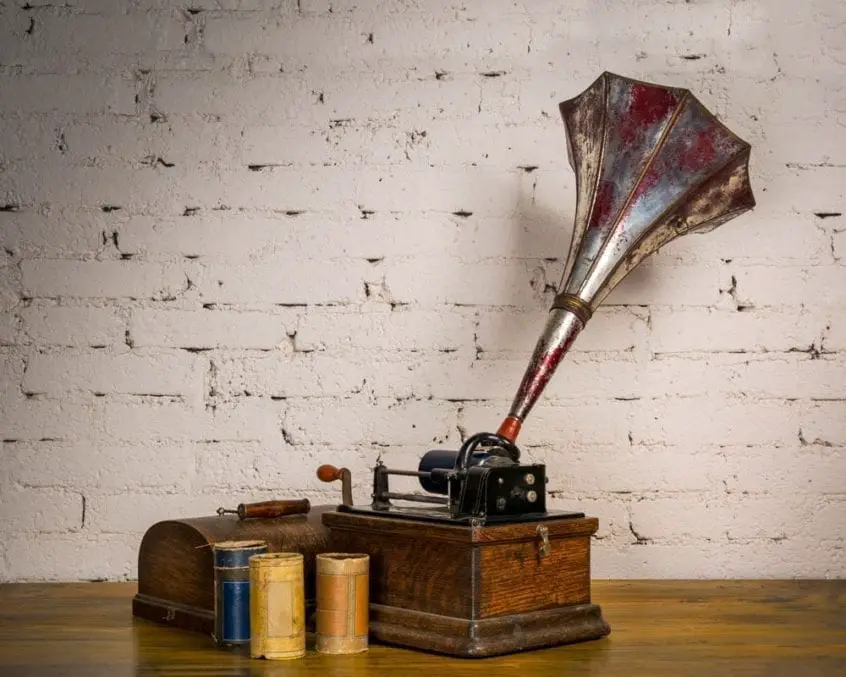


hi baby kata how old are you
nendhbzcbxabaxdbxbzcbaduhhhhhhhhhhhhhhhhhhhhhhhhhhhhhhhhhhhhhhh
[…] The modern turntable has over a 100 years of development behind it. Here’s the history from Sound Matters: […]